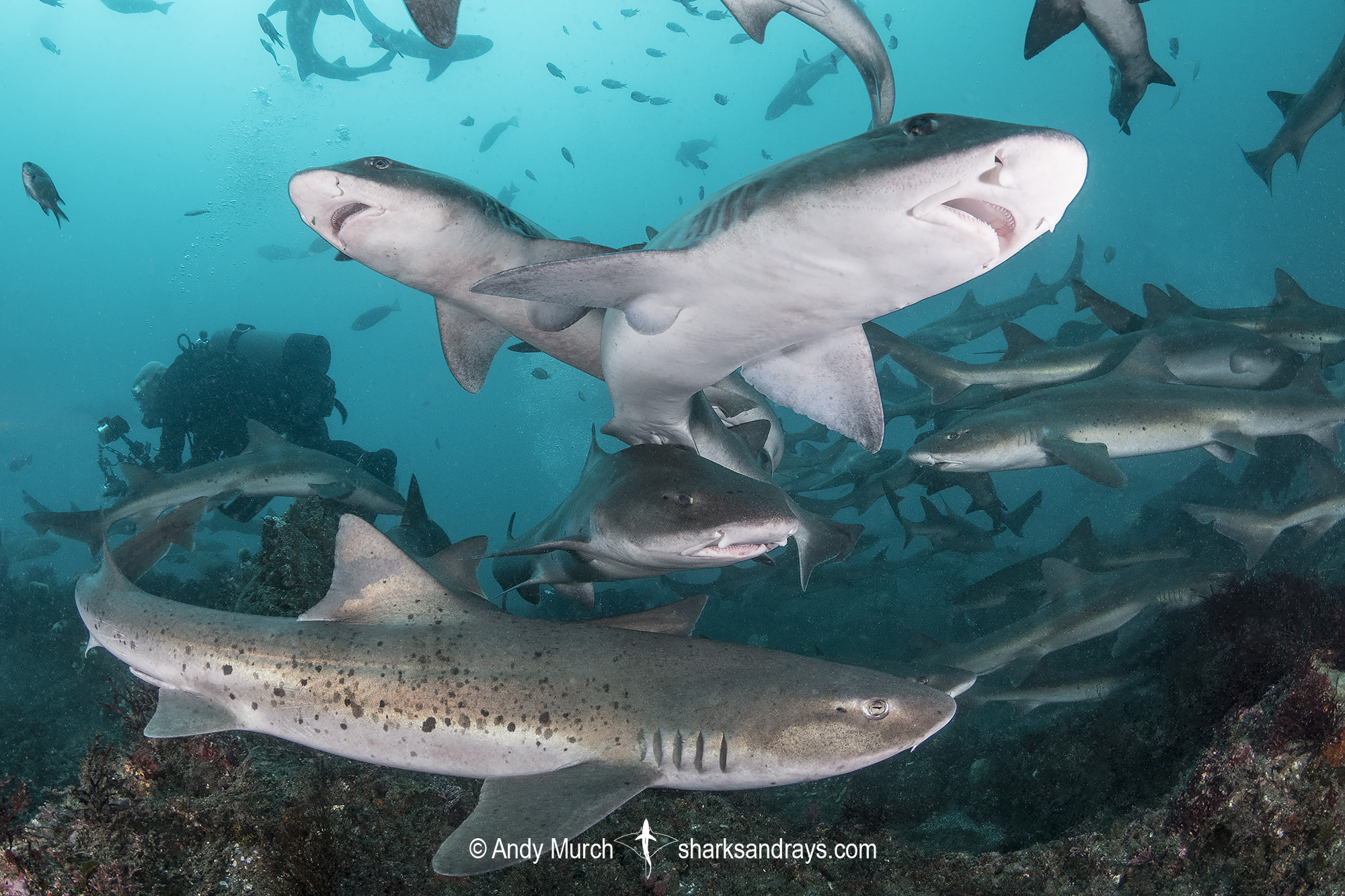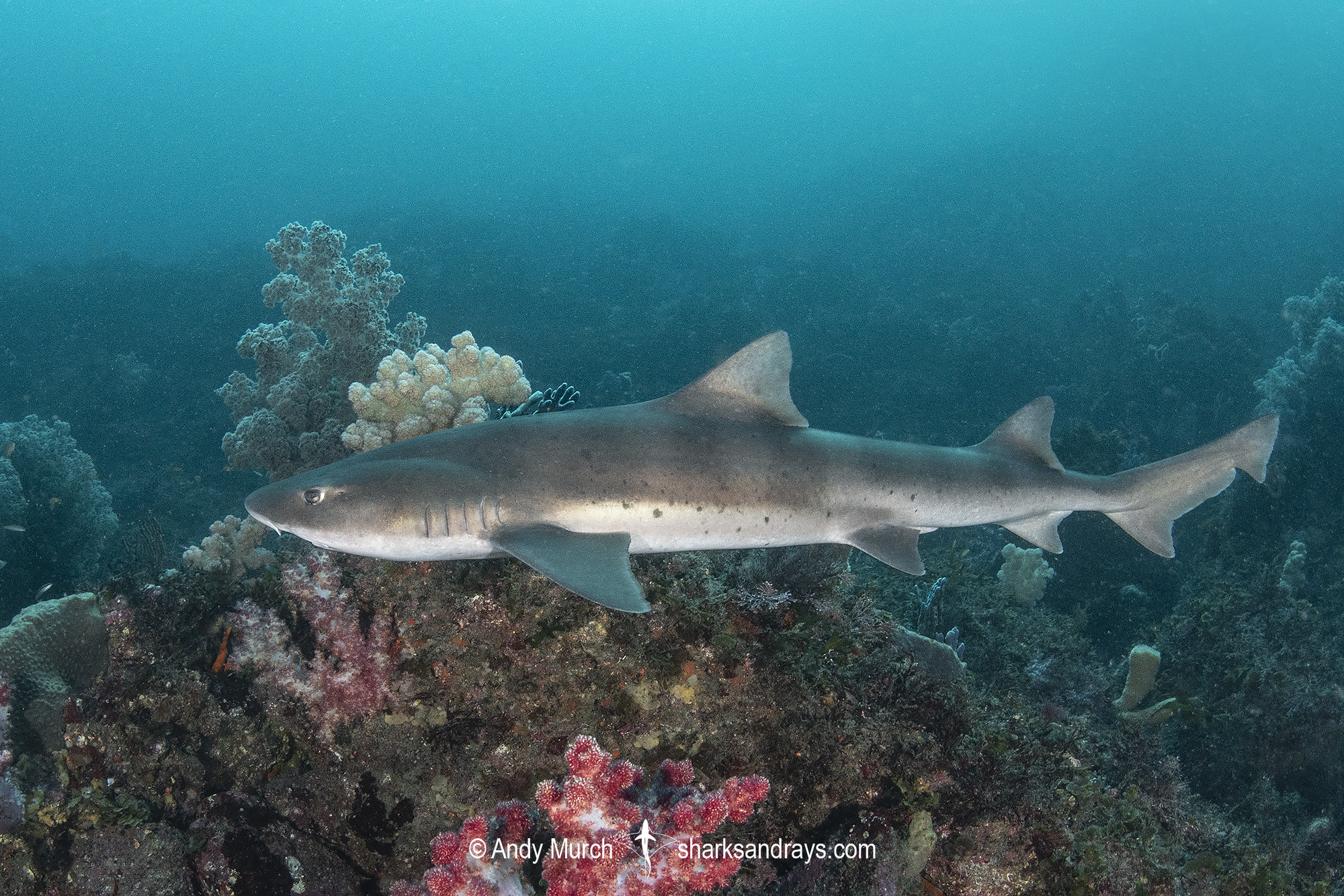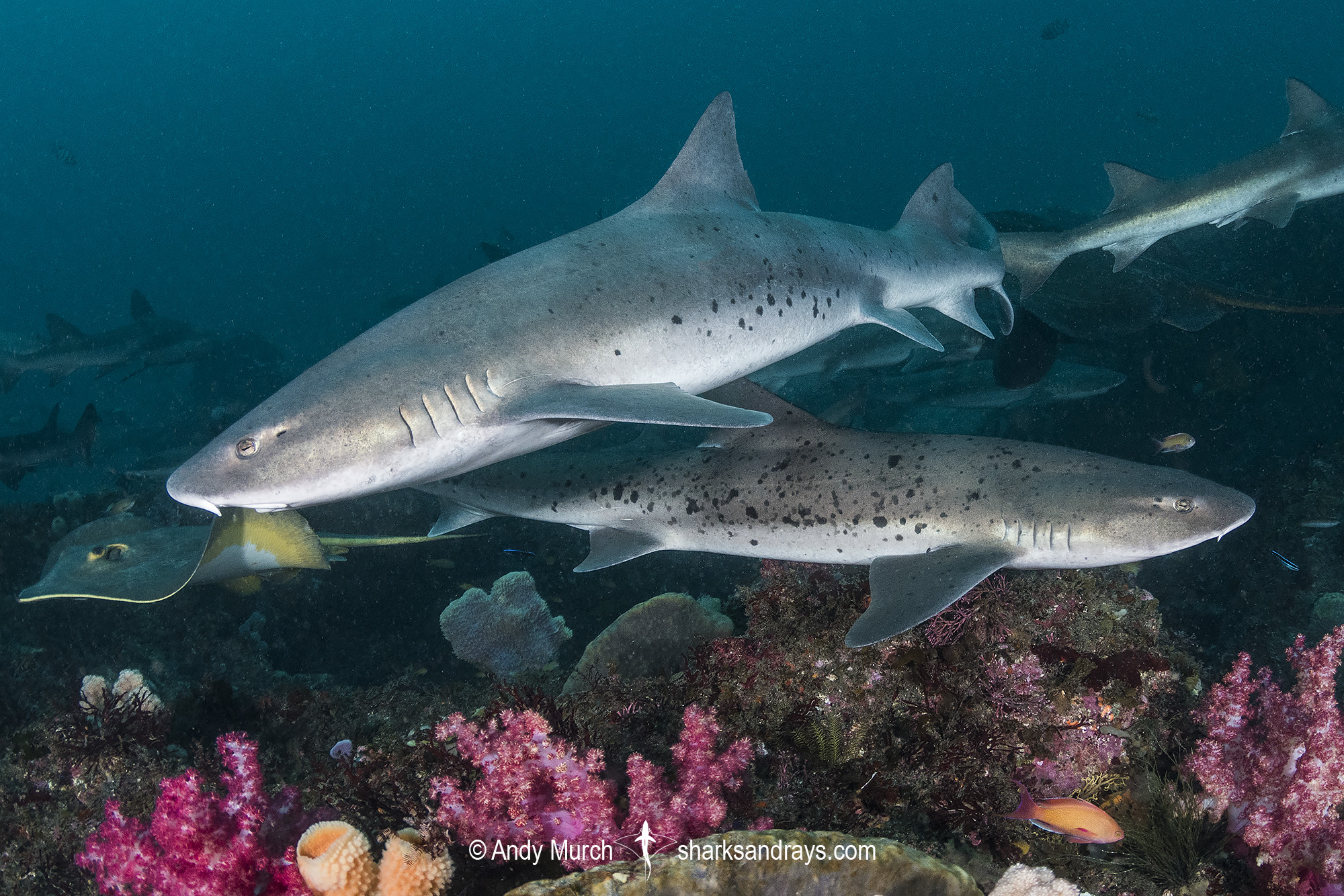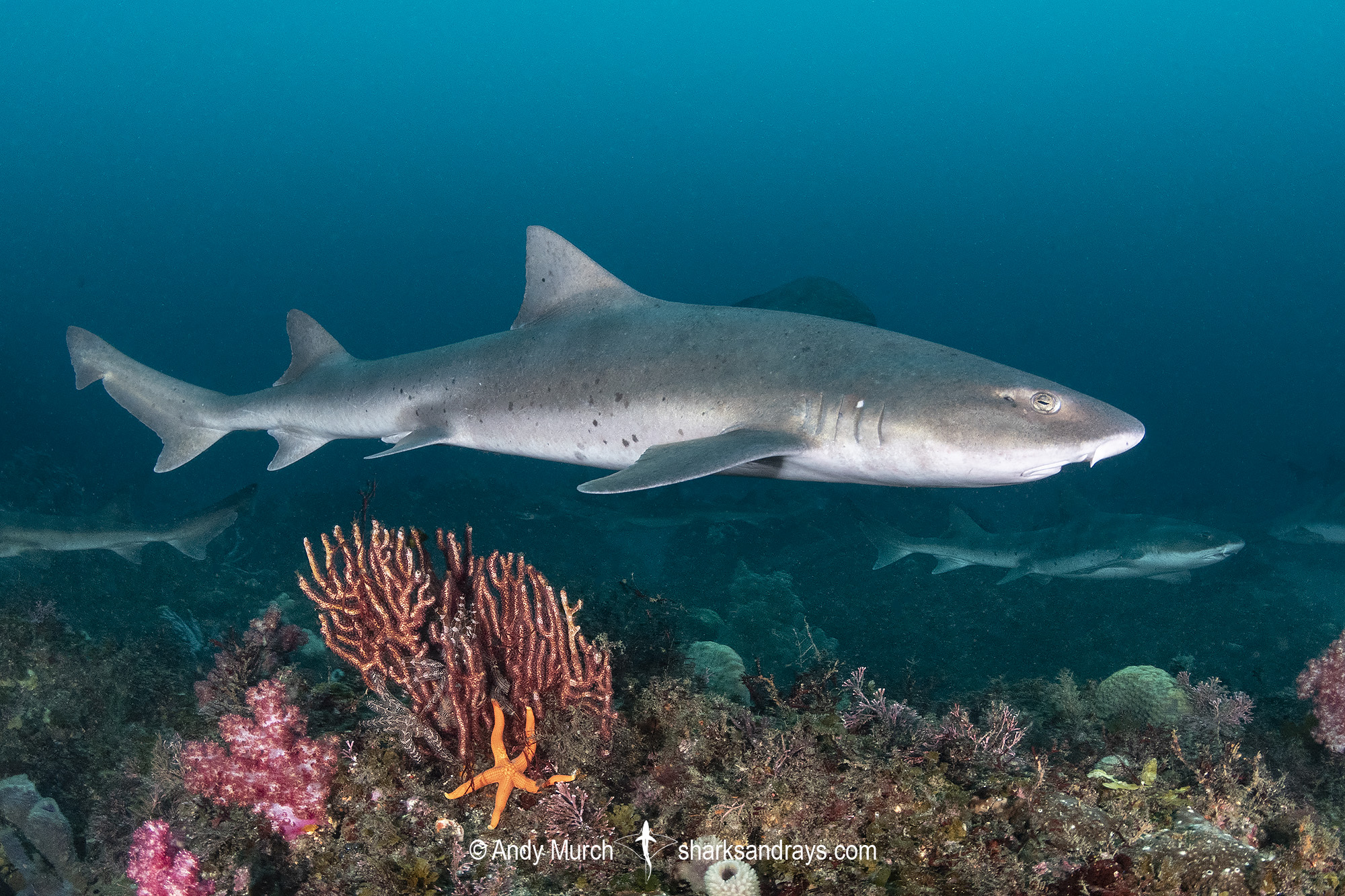Common names
Banded Houndshark.
Binomial
Triakis scyllium.
Synonyms
Hemigaleus pingi, Triakis scyllia.
Identification
Body slender. Snout fairly short and rounded. Upper labial furrows slightly longer than lower. Small, visible spiracle behind eye. First dorsal fin origin slightly posterior to pectoral fin free rear tip. Posterior edge of first dorsal almost vertical. Second dorsal fin larger than anal fin. Second dorsal origin slightly posterior to pelvic fin free rear tip. Lower caudal lobe indistinct but with a small curved apex. Dorsal coloration brown with dusky saddles/bands and small, irregular scattered black spots. Bands fade in adults; sometimes becoming absent.
Size
Maximum length 150cm. Size at birth 18-20cm.

Conservation Status
ENDANGERED
The banded houndshark is a retained bycatch component in trawl, longline, set net, and gillnet fisheries. Although few species specific catch data is available, combined landing data of elasmobranchs within the waters of Japan, China, Korea, and Taiwan indicate significant declines sharks and rays throughout the region.
Once common in Japan, the banded hound shark is now rare although pockets of abundance still exist i.e. off the coast of Chiba. It is still seen fairly regularly but less frequently than before in South Korea. Seasonal trawl bans in Taiwan and China may give this species some refuge from fishing pressure.

Habitat
A temperate/sub-tropical species inhabiting shallow muddy or sandy bays, estuaries, eelgrass beds, and rocky reefs. Usually found near the bottom close inshore.
Distribution
Banded houndsharks are found in the northwest pacific from southern Russia, Japan, Koreas, China, and Taiwan.
Reproduction
An aplacental viviparous species (without a yolk-sac placenta). 10-24 pups per litter.
Diet
Predates mainly on small fishes and crustaceans, plus some other invertebrates.
Behavior
Banded houndsharks enter estuaries to feed. Sometimes found alone but will congregate in large numbers where food is readily available e.g. around fishing boats where bycatch is discarded.
Reaction to divers
Usually very shy and difficult to approach unless habituated to the presence of divers.
Diving logistics
Although it is possible to randomly encounter banded houndsharks while reef diving in Japan, sightings are rare and generally unrewarding. However, over a period of years, the banded houndshark population in southwestern Chiba (south of Tokyo) has been the focus of a concerted effort to develop a commercial shark feed. This was initially done to distract them from nearby fishing boats because they were damaging nets. Now completely habituated to the presence of divers, the houndsharks are extremely easy to approach as they tumble over one another in their pursuit of the bait.
Big fish expeditions runs yearly Japanese shark diving safaris for English speaking divers that includes multiple dives with the houndsharks, plus dives with many other endemic Japanese shark species.
What’s new
View our full list of updates
Similar species
Japanese Tope Shark Distinguished by its more pointed head and lack of markings.















